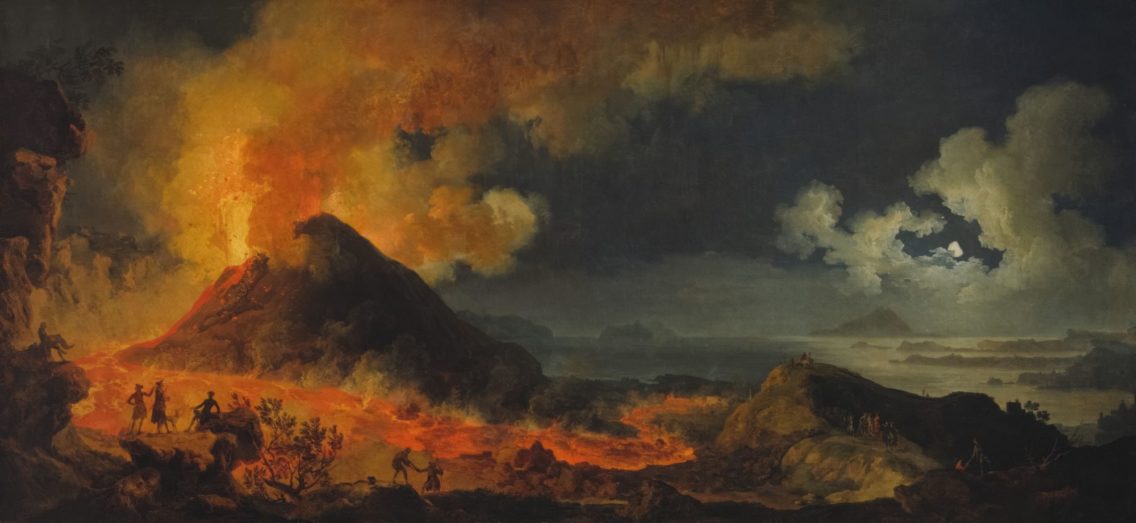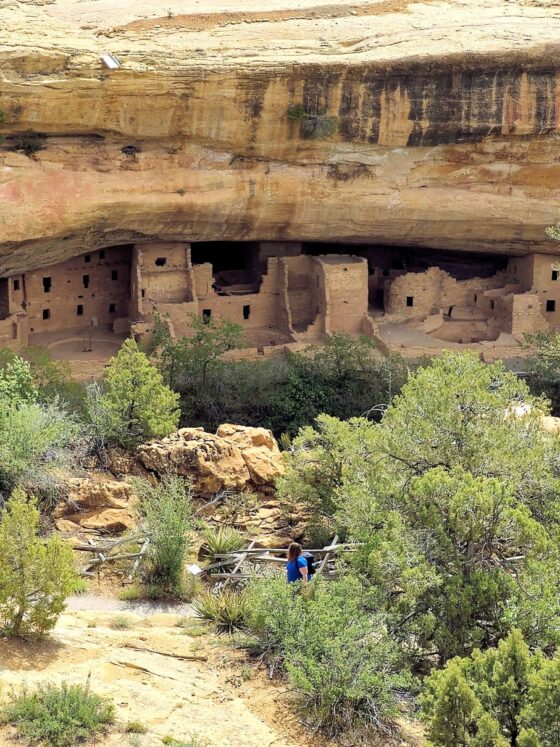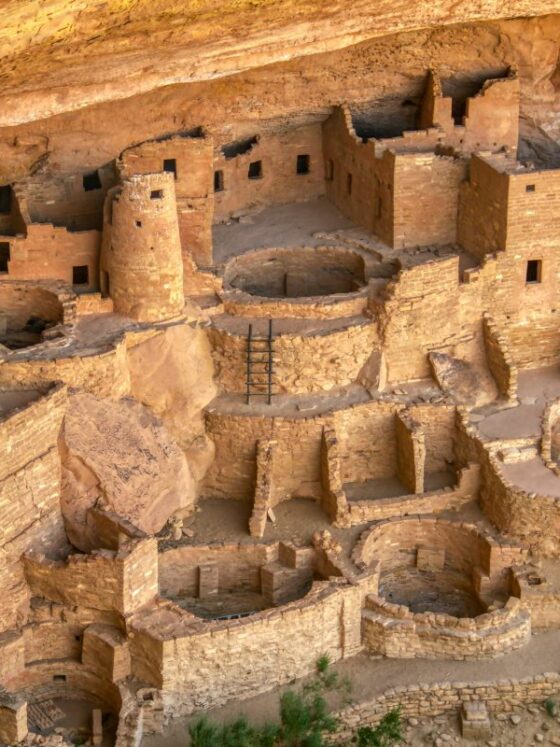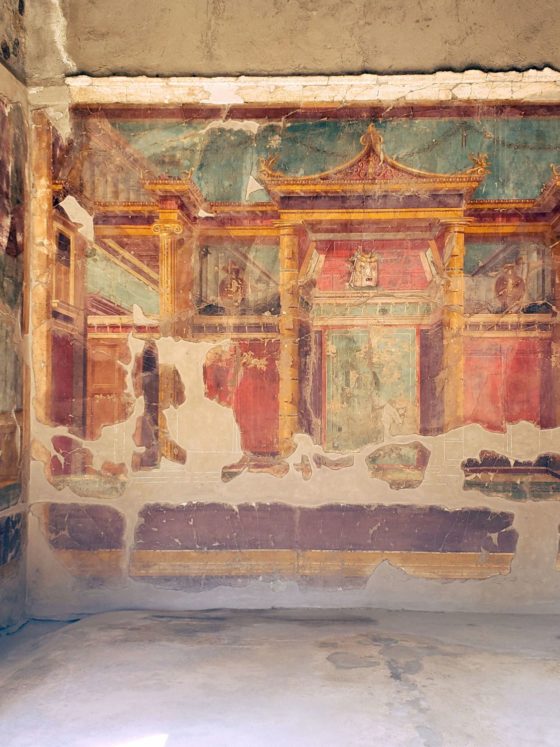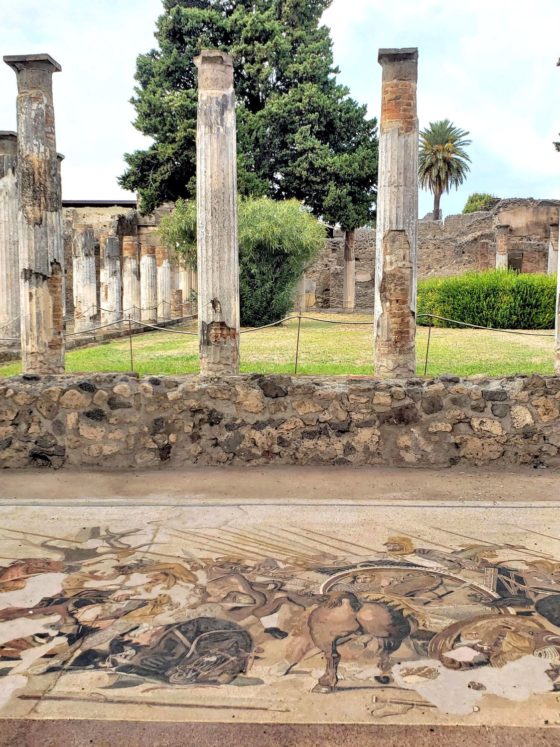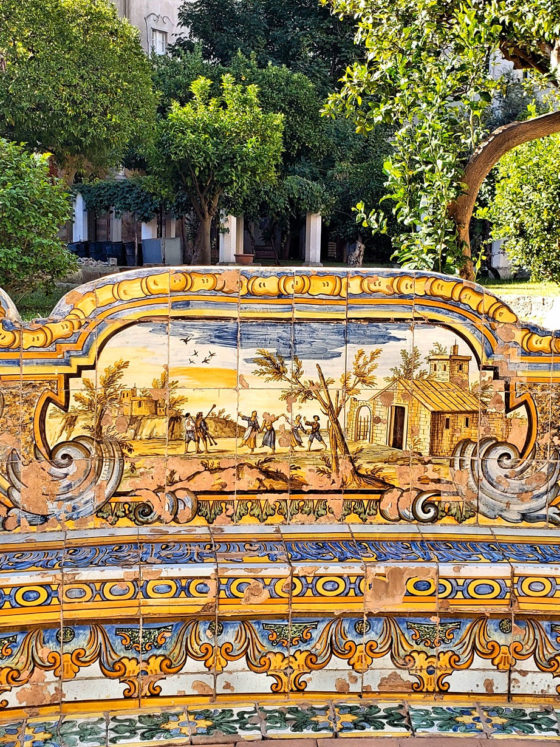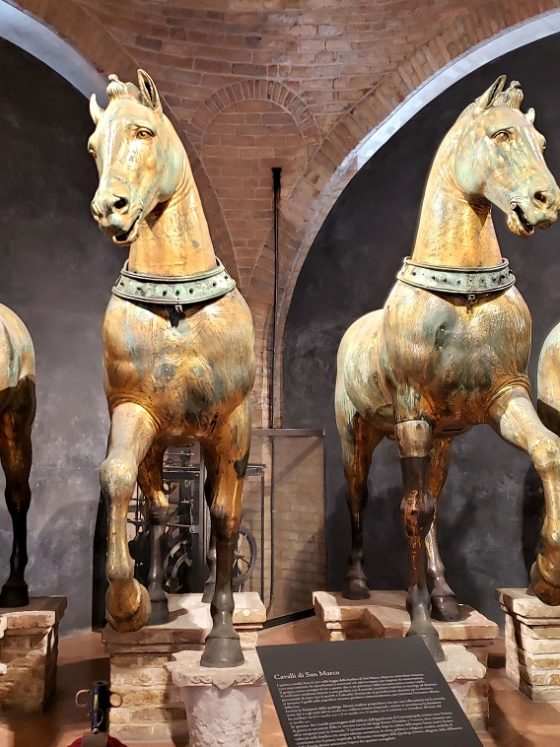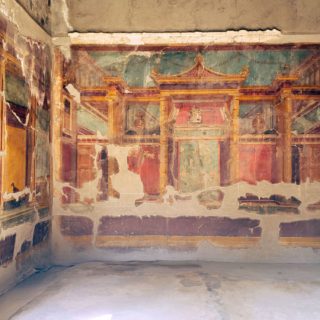The Eruption of Vesuvius, 1771, oil painting by Pierre-Jacques Volaire (Art Institute of Chicago). Vesuvius has had several smaller eruptions since 79 AD. The most recent eruption took place in 1944 right in the middle of fighting WWII. Between 1729-1802 during the life of Volaire, who painted the above oil on canvas, Vesuvius erupted at least six separate times.
Question:
Which is better, Herculaneum or Pompeii?
If we set aside the clearly subjective nature of the query then the question is best addressed by comparing the differences between the two.
1. The first main difference between Pompeii and Herculaneum is the extent to which each site is inherently preserved based on the different nature of their pyroclastic burials. Several factors played a role in preserving these buried cities. One of the most significant factors was whether the volcanic material they were covered in was permeable to oxygen. Pompeii was covered in ash and porous pumice, Herculaneum in lava which turned to solid rock. Because oxygen decomposes organic material several though not all of the skeletal remains found in Herculaneum are more intact than those found at Pompeii. There are also wooden structures, albeit heavily charred ones, like doors, stairs, and even some furniture which may be seen at Herculaneum but not at Pompeii.
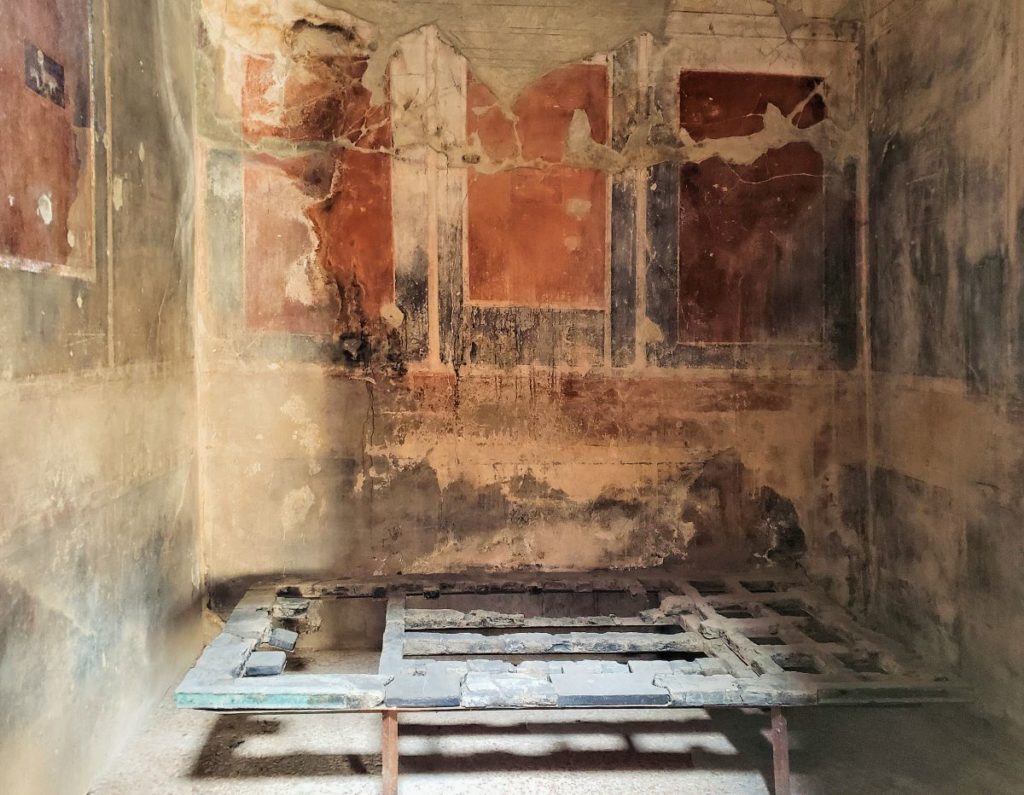
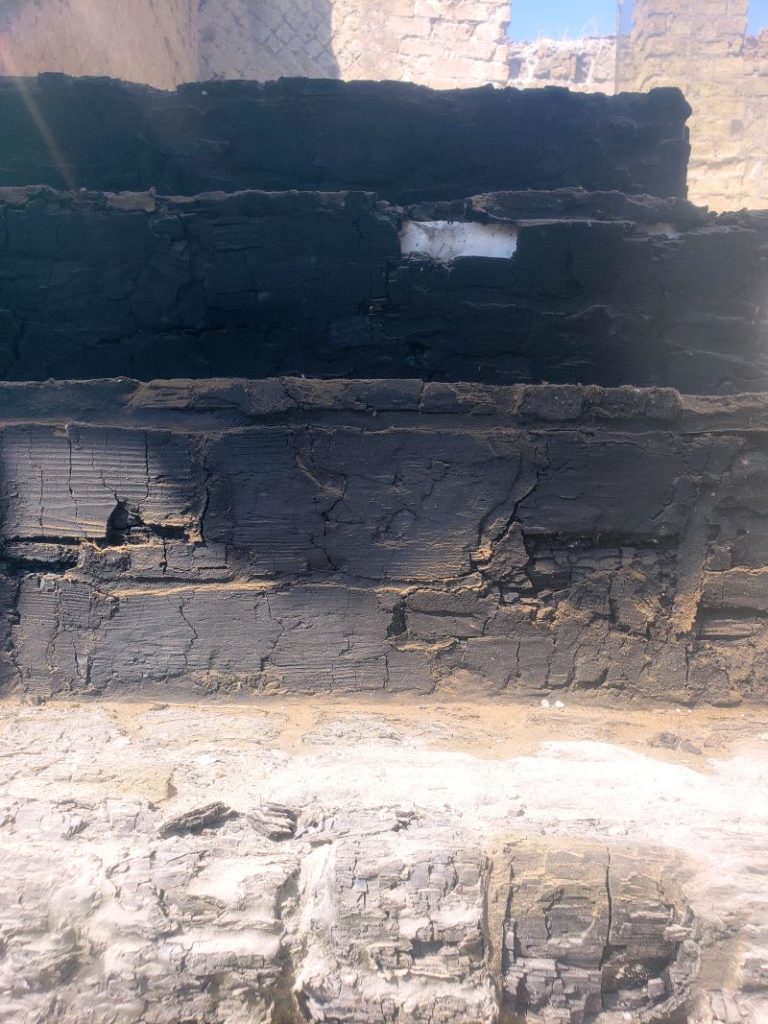
In addition to the different materials they were buried in, how they were buried was also of significance. Because the prevailing winds blew Vesuvius’s volcanic debris cloud to the southwest, Pompeii was heavily covered in debris falling down from above and as it piled up, the weight of all that ash and pumice collapsed most of Pompeii’s roofs and buildings. By contrast the winds protected Herculaneum from this first stage of the eruption, but the next stage sent a surging pyroclastic flow down the slope of Vesuvius straight for Herculaneum, traveling so fast it burned and buried the town instantly. Because of this difference at Herculaneum there are buildings with entire second stories and even roofs which have survived more intact than anything that can be found at Pompeii.
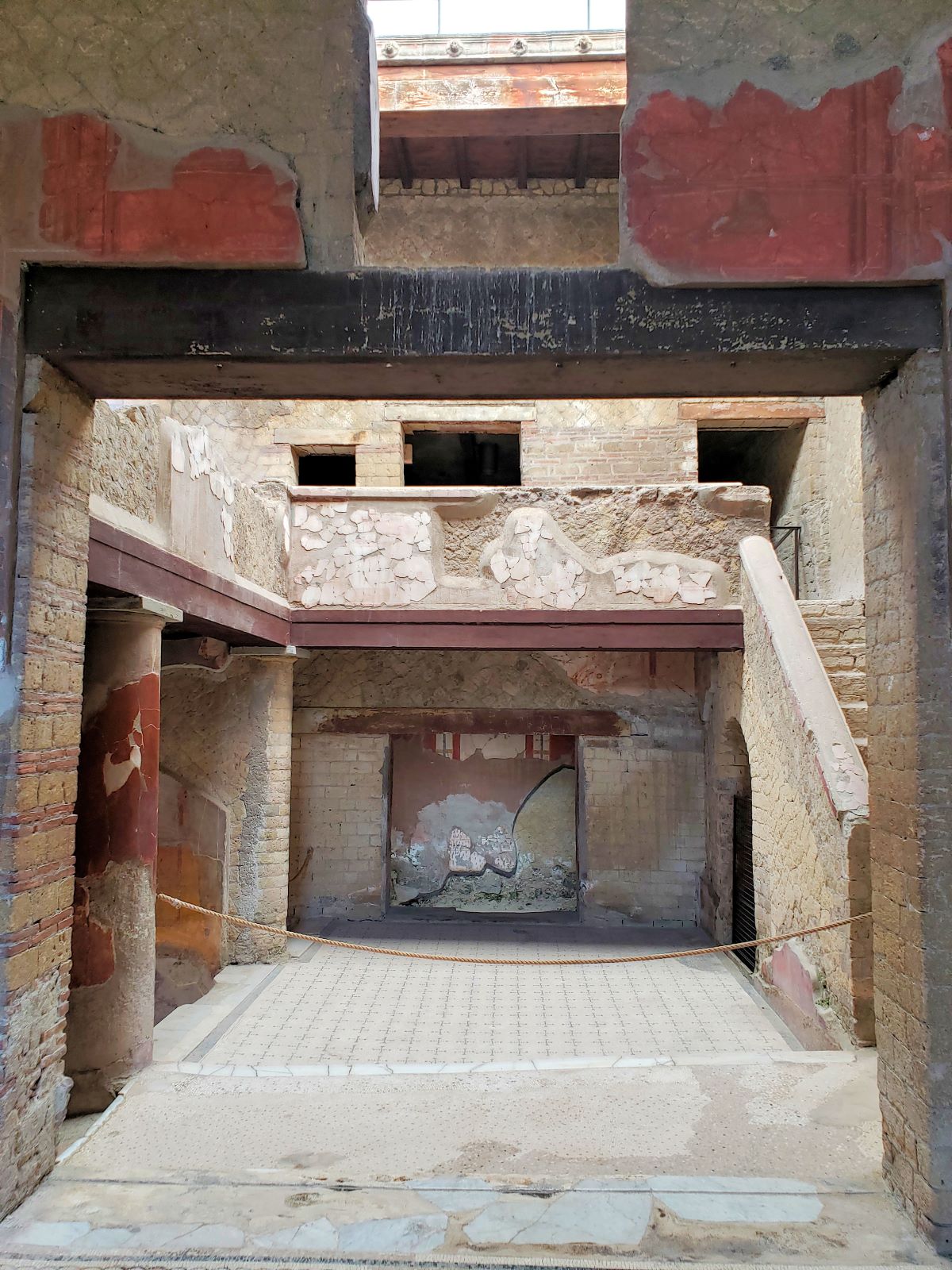
2. The second main distinction between Pompeii and Herculaneum is their size. Pompeii is bigger, a lot bigger. Not only was the ancient city itself larger but also the area that has been excavated is more extensive. The important point to note here is that they have yet to excavate and uncover most of the public buildings at Herculaneum. Herculaneum therefore offers the visitor less variety.
3. The third important difference to take into account is the state of ongoing restoration efforts and recent excavations at each site. While this could obviously change at any time, most of the newest excavations are currently taking place in Pompeii.
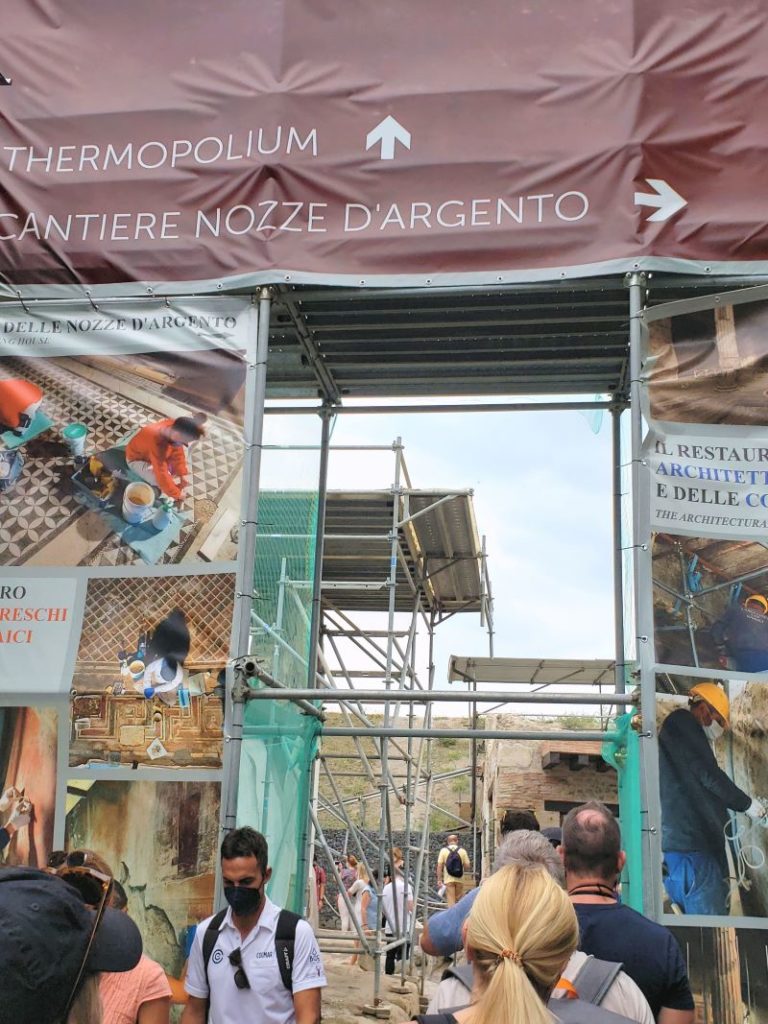
Conclusion:
If you must choose one over the other then I would ultimately (at least at this point in time) recommend Pompeii. Pompeii simply has more variety, a lot more variety, it has exemplary villas, two theaters, the foundation and steps to an Ancient Greek style temple, a very old, possibly Etruscan Sanctuary, shops, bakeries, it even has an amphitheater. On top of all that Pompeii has the newest most exciting excavations as well.
Question:
Can you visit both Pompeii and Herculaneum in one day?
Yes, but not necessarily in their entirety. If visiting both in one day you’ll have to be content with an abbreviated visit to one, most likely Pompeii as it is the larger of the two.
If you’ve decided to see both in one day the best option would be to hire a private guide or join an extra small group tour. Having a guide will allow you to see more in less time. (Just avoid a large group tour.) While I wouldn’t go so far as to say it’s easy to get lost in Pompeii, I will say it’s sometimes difficult to find certain places you don’t want to miss. There is very little signage at either Herculaneum or Pompeii. This doesn’t require you to have a guide but it does mean it will take you longer without one.
Question:
Guide or no guide?
As I mentioned previously, if you’re short on time, I think you should definitely choose a small group or private guided visit. Otherwise this is mostly a matter of budget and preference. If you have plenty of time and money you can always do both; a guided tour and afterward stay inside either archeological park and explore further on your own.
Question:
Are there other sites similar to Pompeii or Herculaneum worth visiting?
If you have enough extra time I’d recommend viewing the Naples Archeological Museum. If you don’t have a lot of extra time but still want a quick add on excursion I’d recommend the Villa Poppaea of Oplontis. It is incredibly easy to get to by train. Located on the circumvesuviana line, the Torre Annunziata Station is less than a five minute walk to the site.
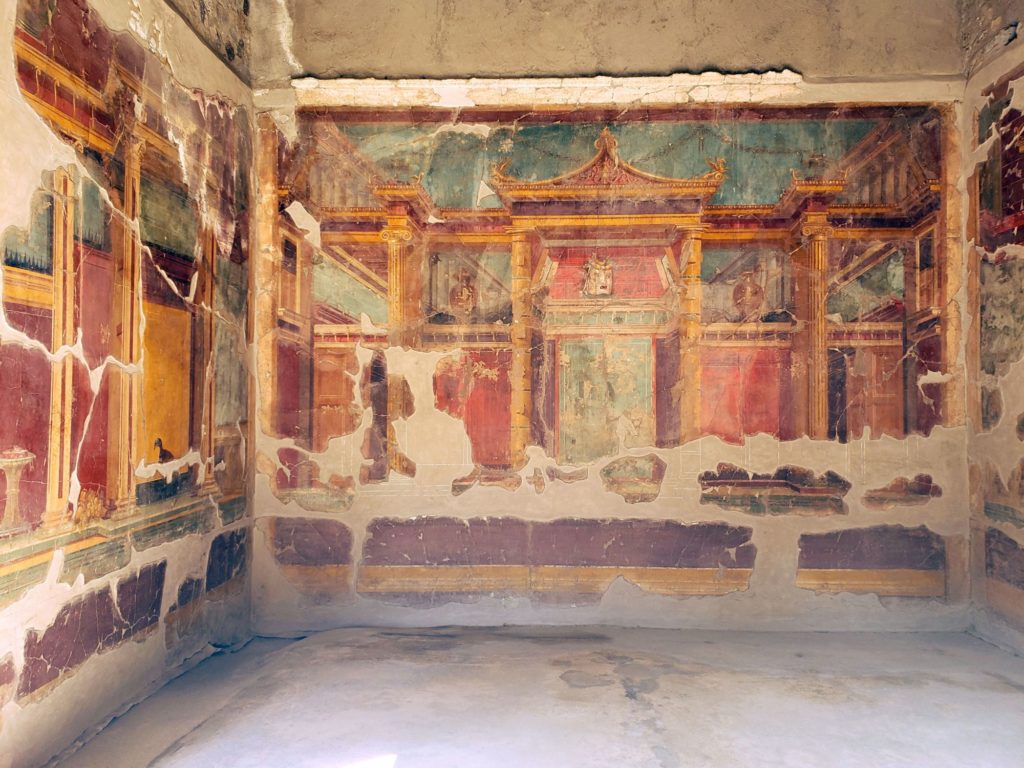
* For a more in-depth answer to this question, see my post, Pompeii was not alone: Other sites uncovered around Vesuvius.
Question:
How does one best prepare for a visit?
As always, check the official websites for important announcements.
pompeiisites.org
ercolano.beniculturali.it
If you’ve decided on a guided tour make sure to book a spot in advance.
If you’ve decided against a guide make sure to download any apps, maps, or guide books you may want to use beforehand. You may even want to print some material out before leaving home. Both archeological parks have semi official apps although both apps have pretty bad reviews. Perhaps better than apps, both sites have extensive guide books you can download for free from their websites.
One enjoyable way to prepare for a visit, and my personal favorite, is to watch a lecture series. I recommend both the Great Courses lecture series on Pompeii with Professor Steven L. Tuck, whose lectures cover both Pompeii and Herculaneum and Yale’s open university series, Roman Architecture with Professor Diana E.E. Kleiner, this course has several lectures dedicated to Pompeii and Herculaneum.
The great Courses lectures can either be purchased individually or viewed with a subscription to Wondrium and the Yale open course is accessible, completely free, from Yale’s open courses website: oyc.yale.edu

